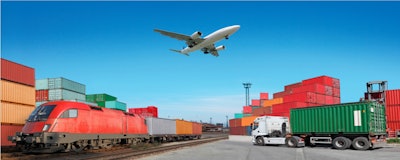
 Jeff Jones
Jeff JonesProtecting the U.S. food supply has become an issue of significant importance to those playing a role in the chain of custody. Many reasons contribute to the heightened awareness — and the elevated role people and businesses must assume — in making certain both the food supply and consumer remain safe.
The Food Safety Modernization Act and the creation of dramatically more stringent auditing schemes as part of the Global Food Safety Initiatives addressing food, packaging, storage and distribution for producers, manufacturers and distributors, coupled with a growing media transparency that can broadcast a message to millions in just moments have contributed to the increased awareness and concern of food safety throughout the chain of custody. Evaluating all the areas where breaches or critical events can occur has been documented over time, and successfully achieved for the larger part. Taking a moment to isolate the associated phases involved in the chain of custody seemed to resonate a repeated theme: that transportation and distribution of goods is often overlooked, or minimized — and that a closer look may help stimulate perspective.
Proper transportation of processed foods and raw commodities requires management of the systems that directly impact issues of spoilage, pest infestation, packaging integrity and food quality. Whether the delivery system is by rail, waterway or road, recognition of possible pitfalls and the implementation of best practices will yield a better product and reduce risk to the general population. For example, do any of the outlined scenarios improve the chances that product will become pest-infested during transport?
- Transporting products in seasonally high temperatures or in warmer climates
- Understanding the delivery line on lengthy shipping times of imports at the port
- Shipment routes and handling that require product to stay on a vessel, ground transport or railcar longer than necessary
- Shipment of goods conducive to pest activity — flour, corn, wheat and most dried food products
- Products not packaged in metal, heavy plastic containers or tightly closed glass
- Unsanitary conditions or infestation present on transport vehicle
The answer is yes. In fact, in many cases outlined above, conditions through transport channels can put product at risk for infestation. These infestations corrupt food quality when unchecked, can infest the facilities that make the foods we consume or even create significant waste when disposition of goods renders it inadequate for use — most of which could have been mitigated by adhering to best practices and imposing preemptive measures. These measures will often include the use of primary-use fumigants authorized by the federal government, under use strategies outlined in labels approved by the Environmental Protection Agency. These strategies identify specific pests, products that may require fumigation and the nature of the site requiring this work, with the predictability of favorable outcomes when performed responsibly.
Though not all situations will require that level of intervention, the cornerstone of preventing contamination in many cases requires the ability to forecast pending problems, and to act swiftly. Do not minimize the role of transportation in food safety, select vendors wisely, draft efficient routing systems, manage inventories to eliminate surplus and prevent historical challenges with susceptible products through strategic fumigation principles.
This integrated approach will help sustain the U.S. food supply at a level anticipated when it was determined that change was not only needed, but imminent.
About the author
Jeffrey Jones is fumigation manager at McCloud Services, based in South Elgin, Ill. McCloud Services provides integrated pest management programs that are designed to target immediate pest concerns with the least possible hazard to people, property and the environment. For more information, please visit www.mccloudservices.com.






















